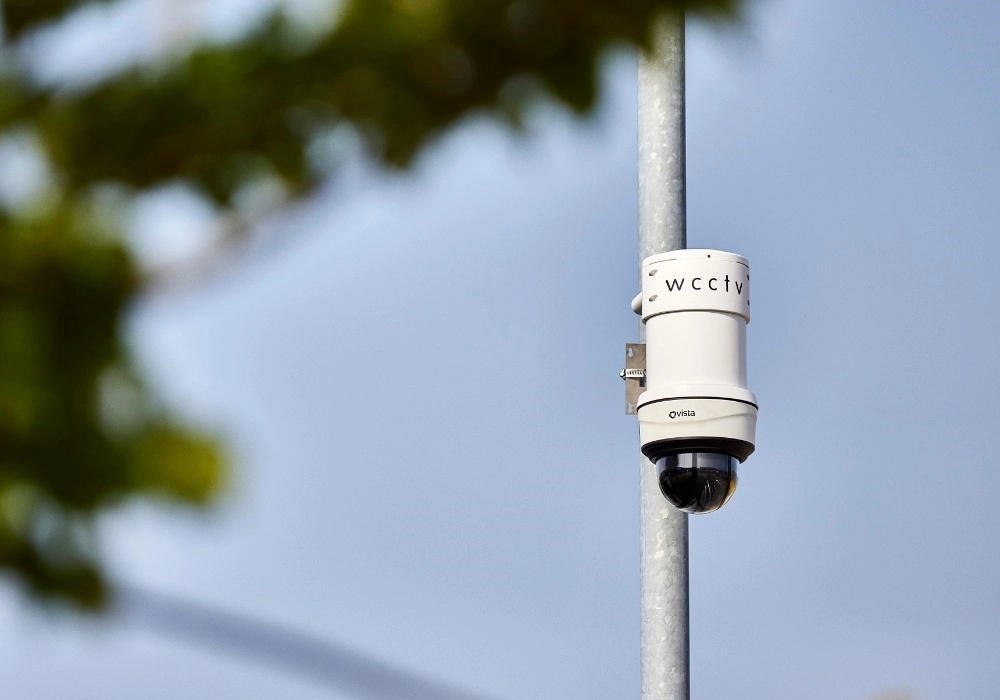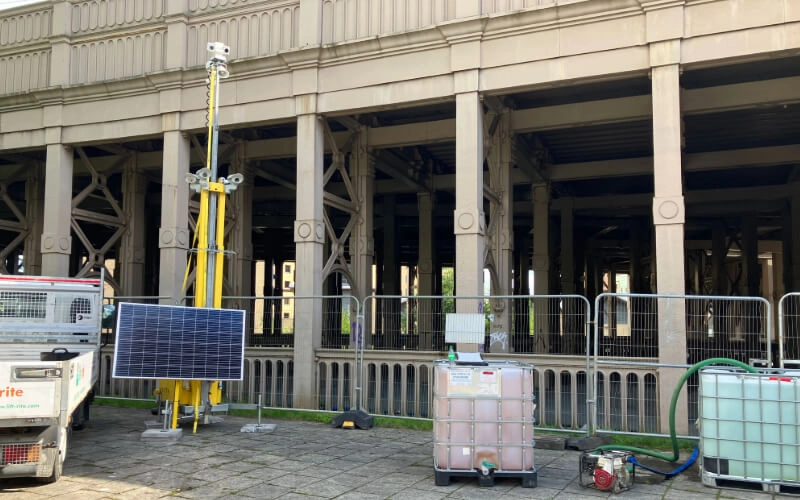An estimated 1 million ASB incidents were recorded by the Police in the year ending September 2024, showing that although there may have been a 1% decrease from the previous year, it is still a prevalent issue nationwide.
Generally, Public Sector organisations like Local Authorities, Councils and Housing Associations are responsible for managing ASB, however, will often be supported by the Police due to it being considered low-level crime.
The consequences of ASB on communities can range from poor public safety and health risks to property damage and physical injury, creating lasting impact on communities.
We explore what ASB truly stands for, the crimes it covers and how Public Sector organisations can prevent it.
What is Anti-Social Behaviour?
ASB stands for Anti-Social Behaviour which is defined as 'behaviour by a person which causes, or is likely to cause, harassment, alarm or distress to persons not of the same household as the person'.
Often a criminal offence, the Police will work with Public Sector organisations to help prevent potential offenders and enforce action when required.
There are three main categories for anti-social behaviour, depending on the number of individuals impacted by the crime:
- Personal anti-social behaviour - When a person targets a specific individual or group.
- Nuisance anti-social behaviour - When a person causes annoyance or suffering to a community.
- Environmental anti-social behaviour - When a person’s actions impact the wider environment such as public spaces and buildings.
Within these three categories, any crime classed as ASB will fall under one of the above statuses and enforcement will vary based on the crime type and its related impact.

Types of ASB
To understand the depth and coverage of ASB, we’re exploring the 13 crime types that these offences can fall under:
Abandoned Vehicles
This covers vehicles that have appeared to have been left somewhere by an owner, rather than being stolen and abandoned.
Often occurring when a vehicle is at ‘end of life’, ready to be scrapped or having faced a road traffic collision, where individuals have abandoned the vehicle with no plan of having it recovered professionally.
The impact of such ASB can cause environmental damage, highway hazards, physical dangers and encourage vandalism and other illegal activity.
Individuals may look to abandon vehicles like this to avoid having to pay for recovery costs or wait for the vehicle to be recovered if on the roadside.
Vehicle Nuisance or Inappropriate Use
This covers acts such as vehicle convoys, street cruising, excessive noise from vehicles and riding or driving on land other than a road.
In this instance, vehicles cover the misuse of electric bicycles, go-peds and motorised skateboards.
Essentially, it’s the misuse of vehicles, from street racing to dangerous stunts, all of which can pose danger to the public and any highways where this behaviour takes place.
Rowdy or Inconsiderate Behaviour
This generally covers nuisance behaviour in public spaces or where it is considered to have accessibility to the public.
Rowdy and inconsiderate behaviour includes swearing, shouting, fighting or being intoxicated, leading to intimidation, damage and in severe cases, escalate to criminal acts.
However, any harassment, public disorder and domestic-related incidents do not fall within ASB and would be classed as crime which would need to be reported in a different manner.
Nuisance Neighbours
Similar to the above, except this specifically covers rowdy and nuisance behaviour caused by neighbours.
This includes boundary and parking disputes, excessive noise and parties, littering, public nuisances and animal disturbances.
Issues relating to neighbour nuisance will often be presented to the Police through complaints and reports. In severe cases, it can lead to physical disputes where repeated occurrences take place.
Littering or Drugs Paraphernalia
From fly posting and fly-tipping to excessive rubbish and illegal littering of drugs paraphernalia, this category covers ASB regarding the removal of waste.
Littering and fly-tipping can create serious public safety risks, high clean-up costs for Local Authorities and Councils and devalue properties within the surrounding area.
Considered to be one of the major issues faced by Local Authorities, fly-tipping and littering can have heavy financial implications and can be amplified by other factors like bin strikes and tip closures.
Animal Problems
This covers any incidents where animals are creating a nuisance or people’s behaviour associated with the use of animals is deemed to be anti-social.
This includes uncontrolled animals, barking, fouling, leaving animals stray and intimidation through the use of an animal.
Trespassing
Trespassing is when an individual or groups of individuals unlawfully enter the property, land, water or premises of another.
It can range from utilising a property’s car park to camp illegally, encroaching into an individual’s land with an object like fencing or using an individual’s land as a shortcut.
Although trespassing itself may not seem directly dangerous to your premises or land, there are many situations where trespassing has developed into further crime like squatting or vandalism.
Nuisance Calls
Covering any form of communication by phone that causes annoyance and/or anxiety, nuisance calls stand for various crimes such as invasive ‘cold calling’ from individuals or businesses and silent calls.
However, any threatening or indecent behaviour via the phone would be escalated further than ASB and would need to be reported as a crime.
Street Drinking
This covers the unlicensed drinking of alcohol in public spaces, where the behaviour displayed is considered anti-social.
Individuals found to be engaging in ASB in this manner could be showing aggressive behaviour from drinking, damaging the environment or intimidating the local community.
Any unlicensed parties that encroach onto the street could also fall under ASB crime and be deemed as anti-social for taking over a public space without permission.
Activity Relating to Sex Workers or Sex Working
From loitering, promoting sex work, sharing business cards or engaging in activity with a sex worker of some kind would be labelled as ASB.
Activities relating to brothels and the impacts they have on the area and wider community based on the behaviour being displayed would also be covered under this category, however, ‘kerb-crawling’ needs to be reported as a crime.
Nuisance Noise
This category relates to any noise nuisance, outside of neighbour disputes as mentioned earlier.
Excessive noise, unlicensed parties and use of noise in an intimidating manner would all be considered as ASB and could lead to the intervention of Police.
Begging
This covers any individual begging or asking for charitable donations in a public space or encouraging a child to do so on your behalf, without permission or a license.
Begging also represents ticket sellers at or near transport hubs where they have no license to do so either.
Misuse of Fireworks
Fireworks can be extremely dangerous and therefore, ASB covers the misuse of fireworks as a crime. This includes shooting them into crowds or property, as well as the unlawful sale or possession of fireworks.
Excessive noise created by fireworks can also fall under this category.
Depending on the type of behaviour shown, this type of crime can escalate to further, more serious crimes which bring potential jail sentences.
How Public Sector Organisations Can Prevent ASB
Besides the Police, Public Sector organisations are the main individuals responsible in dealing with ASB, therefore agencies within this field need to be aware of preventative measures that can be put in place to protect your local area.
We explored 6 key methods that help to effectively reduce ASB:
Community Engagement and Awareness Campaigns
Community engagement and awareness campaigns can significantly support in the reduction of ASB in four main ways:
- Educating the public in ASB, the dangers, consequences and its impact
- Promoting the reporting of ASB and the process individuals must follow
- Highlighting key services that support victims, potential offenders and those currently engaged in ASB
- Empowering communities to address ASB collectively and stop it from impacting the community
Campaigns often encompass various tools to both communicate and provide support tools to members of the public .
Whether it be to victims of ASB, potential offenders, young people or actual offenders, you can create various engagement campaigns to reach the different audiences required.
This type of response fosters a proactive and positive approach to community-centred issues, and encourages the collective support of others to help tackle the issue alongside your organisation.
Popular channels to do this are via social media, as most individuals will now look to seek their news and support online.
Install Mobile CCTV in Public Spaces
Considered to be one of the most effective, if not the most effective prevention tool towards ASB.
Working as a visual deterrent whilst also live monitoring activity, Mobile and Redeployable CCTV provides both crime prevention and evidential backing required for prosecution.
When developing our products, we also encompassed the importance of flexibility and adjusting your security services to your community needs.
There may be a location that faces high ASB levels and initially you may place our security systems at this location, however, as time develops your needs may change to a new area.
Our full product range can be easily relocated to various locations if and when your security needs change. This ensures you can stay on top of ASB and minimise its impact.

Effective ASB Enforcement Process
Part of preventing ASB is to ensure you have an effective enforcement process in place to respond to crime that falls under the ASB umbrella.
This will display to any potential and current offenders that the Police and any Public Sector organisations involved with this are proactively taking action against crime.
You should ensure that you have a clear, concise reporting process for members of the public to follow and respond to this within an appropriate length of time.
Address Underlying Causes Within the Community
ASB can stem from various root causes within a community and may be higher in areas where particular circumstances are more prevalent.
Therefore, your organisation should aim to establish what underlying causes may be present in your community that is leading to ASB.
This could be through surveys, interactions with the community, and secondary research available online like the census.
By gauging these underlying causes, you can help target campaigns and any prevention methods to support those issues and lower the risk of ASB in your area.
Early Intervention and Preventative Measures
Early intervention plays a big role in reducing and preventing ASB as it can help prevent young people from engaging in crime and the impact this has on the local community.
It also highlights any underlying issues as mentioned earlier, allowing you to intervene earlier on and prevent ASB completely, rather than waiting until it takes place.
Creating community workshops, engaging with schools and holding activities at youth groups will encourage young people to engage in healthy habits rather than taking to ASB.
Implement Visual Criminal Deterrents at ASB Hotspots
Early intervention and community engagement can help prevent ASB at the earliest stage, you also need to ensure your community is physically protected from those already engaging in it.
To do this, you should implement visual criminal deterrents around the area, particularly in crime hotspots.
With our CCTV Tower range, they stand up to 6 metres tall and are painted bright yellow, meaning that you receive the enhanced security of working as a visual criminal deterrent and in monitoring these locations also.
Their complete power autonomy allows them to be placed in off-the-grid, rural locations, depending on where your ASB hotspots may be.
Additionally, we also fit our systems with audio deterrents, including live voice-down audio challenges and sirens that aim to boost the crime prevention factor.
Our CCTV Towers have an unmistakable security presence that when individuals are faced by them, many will avoid committing crime when they know they’re being watched.

WCCTV Use Case: Durham Constabulary - ASB Reduction
We previously worked with Durham Constabulary who were faced with serious challenges around anti-social behaviour.
The problems had become so extensive that parts of the town had been branded as 'no-go' areas, and residents were left fearing for their safety.
To tackle the ASB challenges head-on, Durham Constabulary's Neighbourhood Policing Team sourced five of our Redeployable CCTV Cameras to be installed in areas of particular concern.
At the conclusion of the trial period, the cameras were shown to have contributed to a 50% reduction in reported crime rates across the town.
“I am delighted to see excellent partnership working and cooperation delivering such positive results.
"These new cameras will undoubtedly make the communities of Newton Aycliffe safer and more secure and I hope other towns and partnerships will follow Newton Aycliffe's lead.”
Durham Police and Crime Commissioner, Joy Allen
Interested in reducing ASB in your area?




